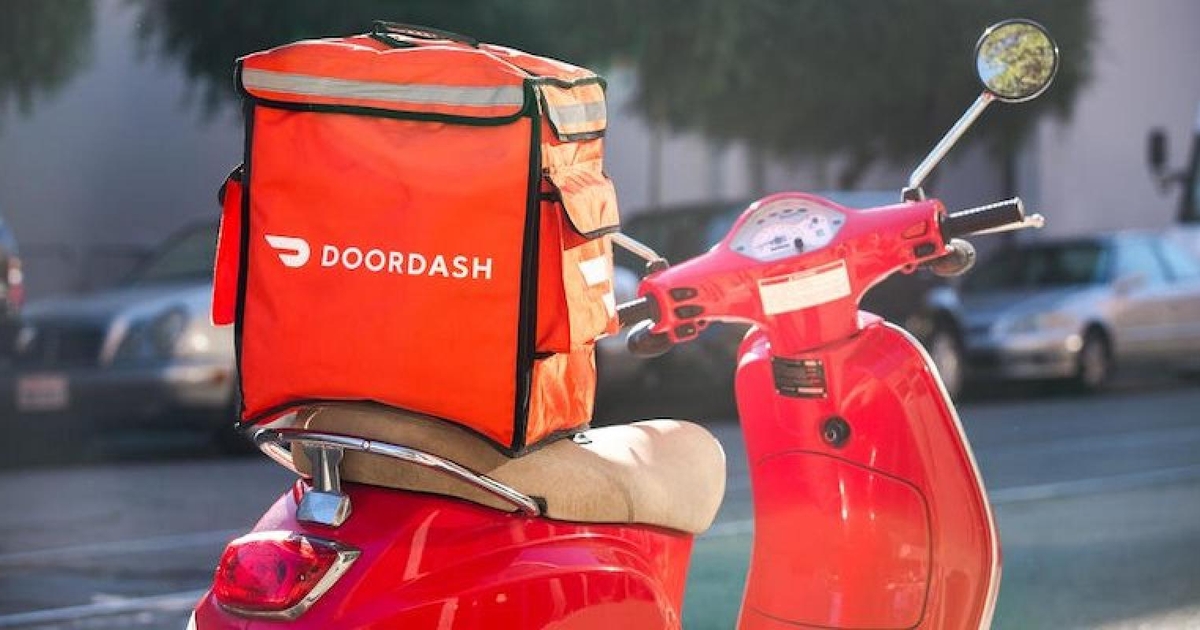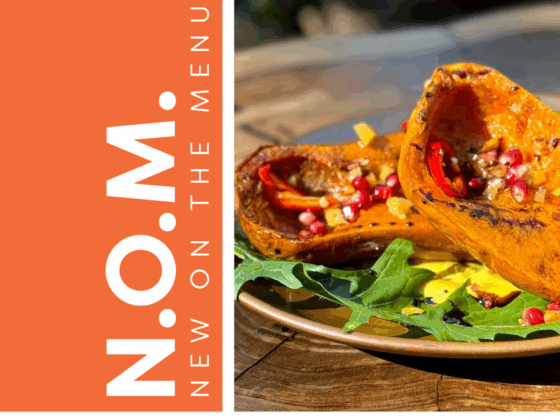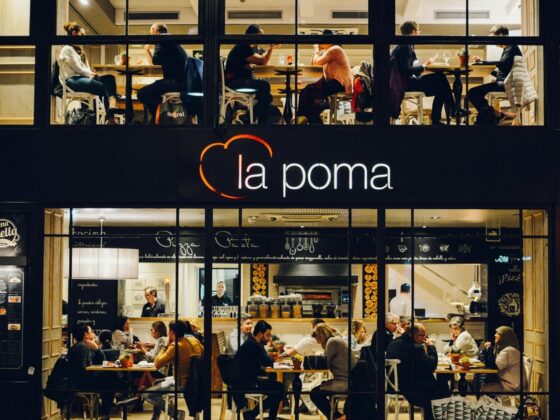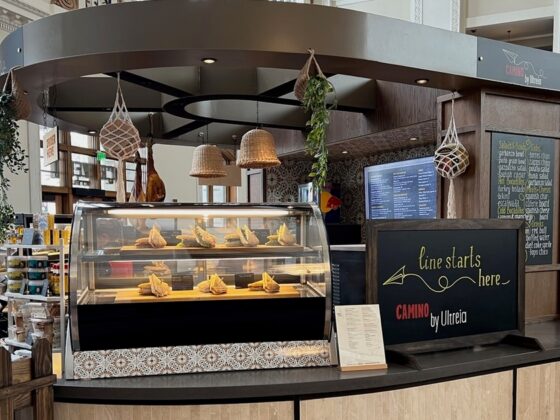
During the pandemic delivery boom, third-party platforms became necessary evils for restaurants. With dining rooms closed, operators needed delivery companies to survive — despite commission fees reaching 30% — making delivery unprofitable for restaurants, but unavoidable as customers increasingly relied on these apps (the U.S. Census Bureau notes that delivery app spending tripled from the start of 2020 to the end of 2022).
This created an adversarial dynamic between restaurants and delivery companies. The “Big Three” platforms — DoorDash, Uber Eats, and Grubhub — even sued cities like New York that tried to cap commission fees at 15% during the pandemic, and eventually, permanently.
Ironically, delivery wasn’t profitable for the platforms for a long time either. DoorDash didn’t post its first profitable quarter until October 2024, four years after going public. Uber Eats took seven years to reach profitability in 2021. Grubhub’s struggles were most acute — valued at $7.3 billion in 2020, the company sold for just $650 million in 2024 to Wonder, a nearly 90% decline in value.
With profitability challenges affecting all parties, delivery platforms have evolved over the years to become more than just listing marketplaces for consumers and revenue-drains for operators.
DoorDash’s evolution
DoorDash — which now claims two-thirds of the delivery market share — has largely been leading the way with this, with the launch of a DIY mobile app tool, loyalty program feature, and drone delivery, as well as the acquisition of three tech companies just over the past year, including software company SevenRooms.
This month, DoorDash took its evolution to a whole new level with multiple announcements of new products at the company’s annual DashForward event, including a proprietary robot delivery fleet, new hardware that can weigh a delivery bag’s order contents for better order accuracy, and multiple in-store dining tools like reservation capabilities.
“Going beyond delivery has been part of DoorDash’s mission from the beginning, which inspired the acquisition of SevenRooms, and unlocked our ability to get into the reservations space,” Parisa Sadrzadeh, vice president of DoorDash, said in a recent interview. “We’re more focused on building more omnichannel ways for restaurants to grow, both on- and off-premises.”
As DoorDash continues to outgrow its original function as a delivery marketplace, the company is increasingly exploring more of an end-to-end strategy.
“Ultimately, they have to expand to new avenues because as a public company, you have to show your investors that you are growing in revenue and profit,” Joe Yetter, general manager at Par Technology, said. “They can either choose to expand horizontally or expand vertically and win new customers. But the delivery app market is saturated. If you’re not joining one now, you’re probably never going to join one, so they’re not really growing by adding new brands anymore. …so now, they’re expanding into new technology.”
Chowbus’ complete 180
This shift to an end-to-end platform played out more dramatically on a smaller scale at Chowbus: the former startup delivery platform-turned SaaS provider. Chowbus launched in 2016 as a delivery platform with minority-owned restaurants in mind and has since pivoted to focus on launching a POS system for emerging operators in 2020, before completely exiting the delivery business in 2024.
“Delivery is still a consumer business, so the primary customer still the consumer, and that in some ways conflicts with the restaurant’s interests,” Linxin Wen, CEO of Chowbus, said. “We always want to build a platform to help restaurants, but we figured out if we wanted to help restaurants in a more meaningful way, we should get into launching a POS, which launched in 2022.”
These days, Chowbus is still creating products aimed at minority-owned independent restaurants but now offers products like delivery integration and tablet ordering, kitchen display systems, and loyalty options, in addition to the POS system.
Grubhub’s journey under Wonder
Other delivery companies are also evolving to chase new revenue streams and horizontal growth opportunities, like Grubhub. After officially acquiring Grubhub in January, Wonder has unveiled a brand refresh that aims to put all of its meal-time channels in one place.
“As part of Wonder, we’re building toward a true ‘mealtime platform’ – bringing together Wonder’s first-party restaurants like Bobby Flay Steak or Yasa’s by Michael Simon, hundreds of thousands of local restaurants, and even Blue Apron meal kits in one place,” Howard Migdal, CEO of Grubhub, said. “Grubhub has become much more than a restaurant marketplace. We’ve expanded the value we provide to diners and restaurant partners.”
Uber Eats stays in its lane
Of the “Big Three” third-party providers, Uber Eats has stayed the truest to its original mission as a delivery marketplace. In fact, a company spokesperson said that this is how Uber differentiates itself from competitors (like DoorDash) that are expanding into new avenues.
“Some providers want to own the entire stack, but that can lock restaurants into a single way of working,” Adrian Githuku, head of delivery integrations for Uber, said. “Our approach is different: we invest in our partners and integrations, so restaurants get the ease of a one-stop shop, without having to overhaul their tech stack or give up choice.”
For example, Uber just recently announced an external partnership with financial solutions company, Pipe. Uber will share restaurant sales data with Pipe, which can then in turn make loan offers to participating restaurants based on this information, though nothing is guaranteed. The major difference? Uber is not acquiring Pipe or building its own financing engine.
“Restaurants already rely on many best-in-class tools, and our role is to make sure those work seamlessly with Uber Eats,” Githuku said.
Delivery for the long-haul
While Grubhub, Uber Eats, and DoorDash still call delivery their core business, each platform is adapting to survive in an increasingly competitive market where DoorDash dominates with over 60% market share.
DoorDash’s horizontal expansion into comprehensive restaurant solutions—from POS integration to marketing tools—signals a move beyond the traditional “delivery tax” model, from “necessary evils” to more traditional business partners.
“Helping restaurants succeed today means supporting them across every channel where customers want to connect,” Casey North, vice president at DoorDash said. “DoorDash believes restaurants are the fabric of local communities, and their success requires both strong delivery capabilities and digital tools that drive in-store growth, strengthen customer relationships, and improve profitability in an increasingly digital-first world.”
Contact Joanna at [email protected]






